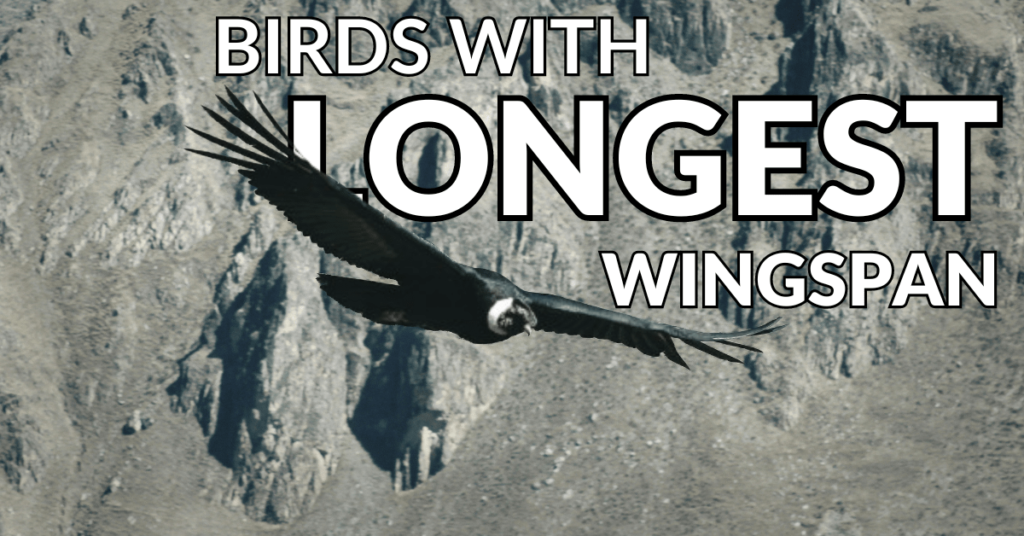Introduction
Birds have always fascinated humans with their incredible abilities to soar through the sky, and one of the most impressive features they possess is their wingspan. Wingspan is defined as the distance from the tip of one wing to the tip of the other when the wings are fully extended. This characteristic not only affects how birds fly but also plays a crucial role in their survival strategies, including hunting, migration, and territory defense.
In this article, we will explore the top 10 birds with largest wingspans, highlighting which bird has the largest wingspan and discussing the unique adaptations that allow these magnificent creatures to thrive in various environments. From the majestic albatross to the powerful condor, these birds with biggest wingspan showcase nature’s engineering prowess and remind us of the delicate balance within our ecosystems. You’ll discover not only the bird with longest wingspan but also the fascinating lifestyles and behaviors of these incredible species.
You might also be interesting in checking out The Largest Birds in the World
Criteria for Ranking
When ranking the birds with largest wingspan, several criteria come into play. The primary focus is on the maximum wingspan measurement recorded for each species. This measurement is critical in understanding how these birds interact with their environments and how their wingspan contributes to their flight efficiency.
Additionally, habitat and dietary preferences are considered, as they provide insight into the ecological roles these birds play. Birds with larger wingspans often inhabit open spaces, such as oceans and mountains, where they can take advantage of thermal currents to glide over vast distances with minimal energy expenditure.
Wingspan is not merely a measurement; it serves as a survival tool, allowing these birds to soar gracefully while hunting for prey or traversing long distances during migration. By exploring these criteria, we can appreciate the incredible adaptations and strategies that make these largest wingspan birds not only remarkable but essential to the ecosystems they inhabit.
Top 10 Birds with Largest Wingspan:
10. Grey-headed Albatross
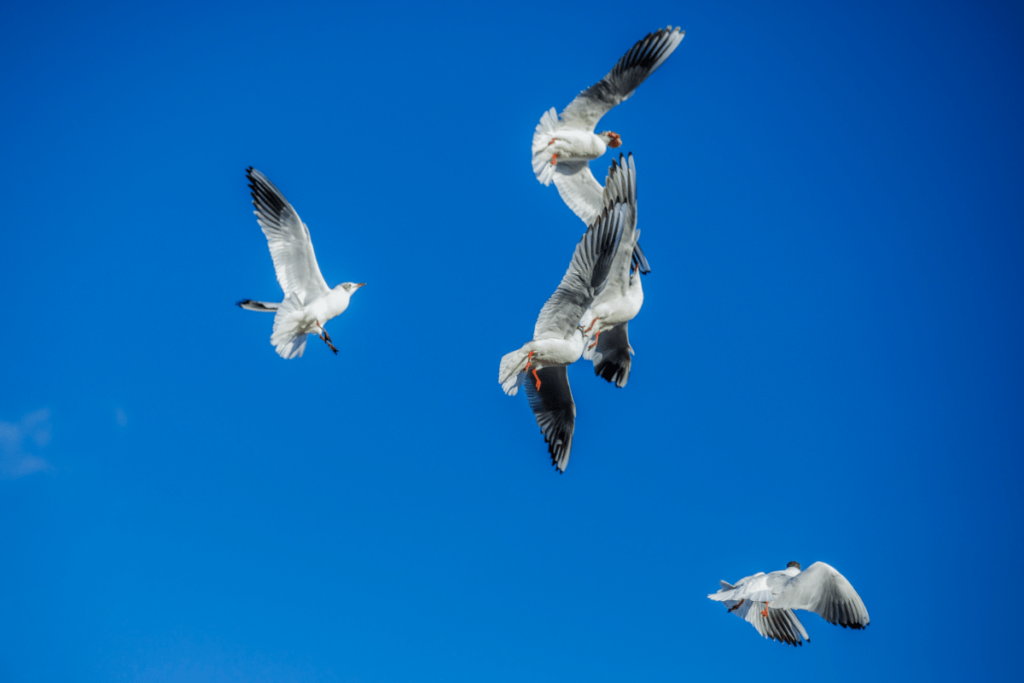
The Grey-headed Albatross is one of the most graceful seabirds, known for its impressive wingspan and remarkable flying skills. With a wingspan reaching up to 8 feet (2.45 meters), this albatross is well adapted to life over the open ocean, where it can glide effortlessly on wind currents for hours.
- Common Name: Grey-headed Albatross
- Scientific Name: Thalassarche chrysostoma
- Family Name: Diomedeidae
- Type: Seabird
- Wingspan: 8 ft / 2.45 m
- Average Mass: 3.4 to 4.5 kg (7.5 to 9.9 lb)
- Average Total Length: 81 to 91 cm (32 to 36 in)
- Diet: Primarily fish, squid, and crustaceans
- Habitat: Southern Ocean, particularly around sub-Antarctic islands
- Conservation Status: Vulnerable
The Grey-headed Albatross is highly skilled at scavenging food from the ocean surface, using its excellent sense of sight to locate prey from great distances. These birds are also known for their monogamous breeding habits, often returning to the same mate and nesting site each year. However, they face threats from longline fishing and environmental changes, making conservation efforts essential for their survival.
9. Bearded Vulture
The Bearded Vulture, also known as the Lammergeier, is a unique bird with a distinctive appearance and a fascinating diet. With a wingspan of about 9 feet (2.75 meters), this impressive vulture is known for its habit of feeding primarily on bones. It is often seen soaring gracefully in mountainous regions, where it can spot its next meal from high above.
- Common Name: Bearded Vulture
- Scientific Name: Gypaetus barbatus
- Family Name: Accipitridae
- Type: Vulture
- Wingspan: 9 ft / 2.75 m
- Average Mass: 5.5 to 7.5 kg (12 to 17 lb)
- Average Total Length: 90 to 105 cm (35 to 41 in)
- Diet: Primarily bones, supplemented by carrion and small mammals
- Habitat: Mountainous regions in Europe, Asia, and Africa
- Conservation Status: Near Threatened
The Bearded Vulture has a unique feeding technique where it drops bones from great heights to break them open and access the nutritious marrow inside. Its striking appearance, characterized by its reddish-brown plumage and beard-like throat feathers, adds to its allure. Conservation efforts are underway to protect this fascinating species from habitat destruction and other threats.
8. Bald Eagle
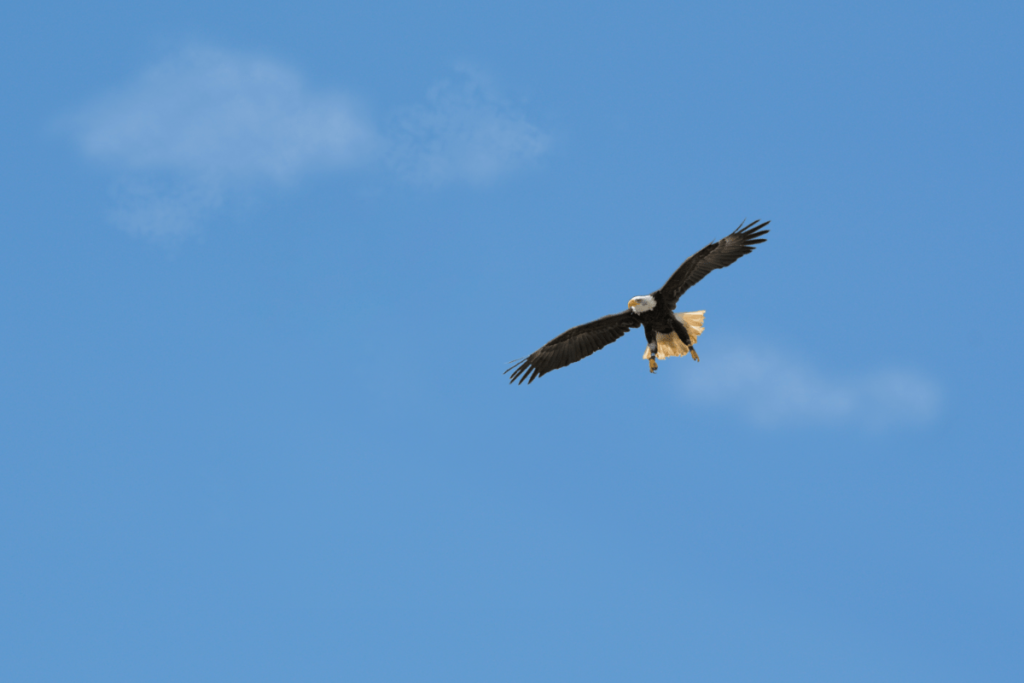
The Bald Eagle is one of the Birds with Longest Wingspan. It is a symbol of strength and freedom, known for its striking appearance and impressive wingspan. With a wingspan of up to 8.2 feet (2.5 meters), this majestic bird of prey is found near large bodies of open water, where it can find ample food supply, primarily consisting of fish. The Bald Eagle’s ability to soar at great heights allows it to survey vast territories for hunting.
Also check out The Secrets Behind Their Hunting Techniques
- Common Name: Bald Eagle
- Scientific Name: Haliaeetus leucocephalus
- Family Name: Accipitridae
- Type: Bird of Prey
- Wingspan: 8.2 ft / 2.5 m
- Average Mass: 3.6 to 6.3 kg (7.9 to 14 lb)
- Average Total Length: 70 to 102 cm (2.3 to 3.4 ft)
- Diet: Primarily fish, small mammals, and carrion
- Habitat: Near large lakes, rivers, and coastal regions in North America
- Conservation Status: Least Concern
The Bald Eagle’s keen eyesight and powerful talons make it an efficient hunter. It often builds large nests near water sources, which can be reused and expanded over many years. While the Bald Eagle was once endangered due to hunting and habitat loss, conservation efforts have led to a remarkable recovery.
7. Tristan Albatross
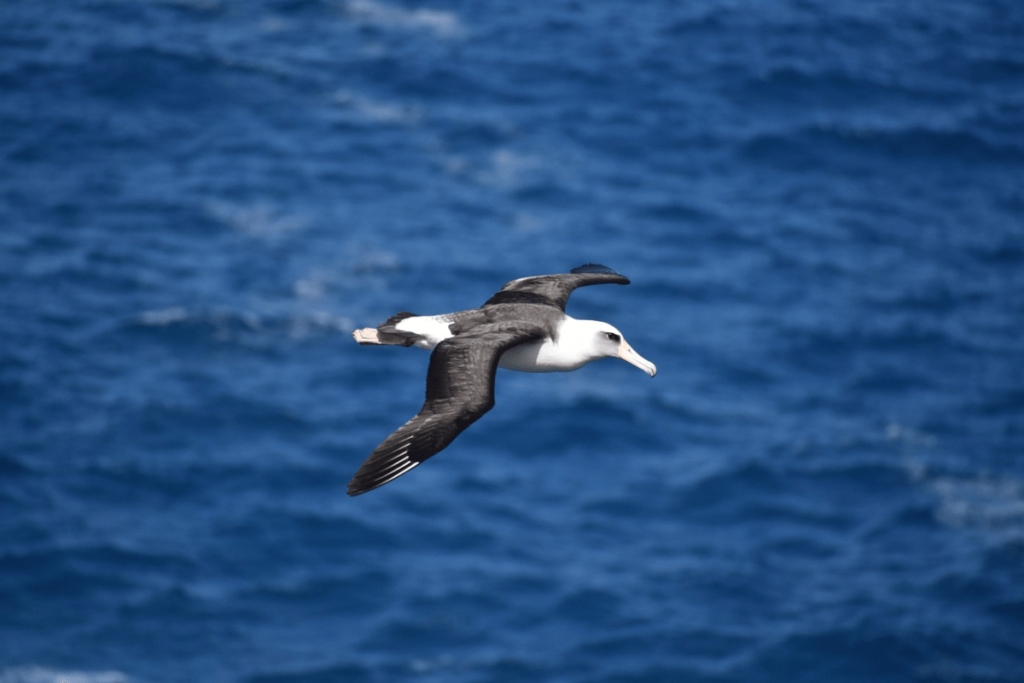
The Tristan Albatross is a magnificent seabird, recognized for its impressive wingspan and incredible flying abilities. With a wingspan of up to 9.2 feet (2.8 meters), this albatross is well adapted for life at sea, gliding over the open ocean with grace and ease.
- Common Name: Tristan Albatross
- Scientific Name: Diomedea dabbenena
- Family Name: Diomedeidae
- Type: Seabird
- Wingspan: 9.2 ft / 2.8 m
- Average Mass: 8 to 12 kg (18 to 26 lb)
- Average Total Length: 105 to 125 cm (41 to 49 in)
- Diet: Primarily fish, squid, and crustaceans
- Habitat: Tristan da Cunha and surrounding waters in the South Atlantic Ocean
- Conservation Status: Critically Endangered
The Tristan Albatross is known for its exceptional gliding abilities, which allow it to travel vast distances in search of food. Unfortunately, this species is critically endangered due to habitat loss, introduced predators, and fishing practices that threaten its population. Conservation efforts are essential to protect this unique seabird.
6. Great White Pelican
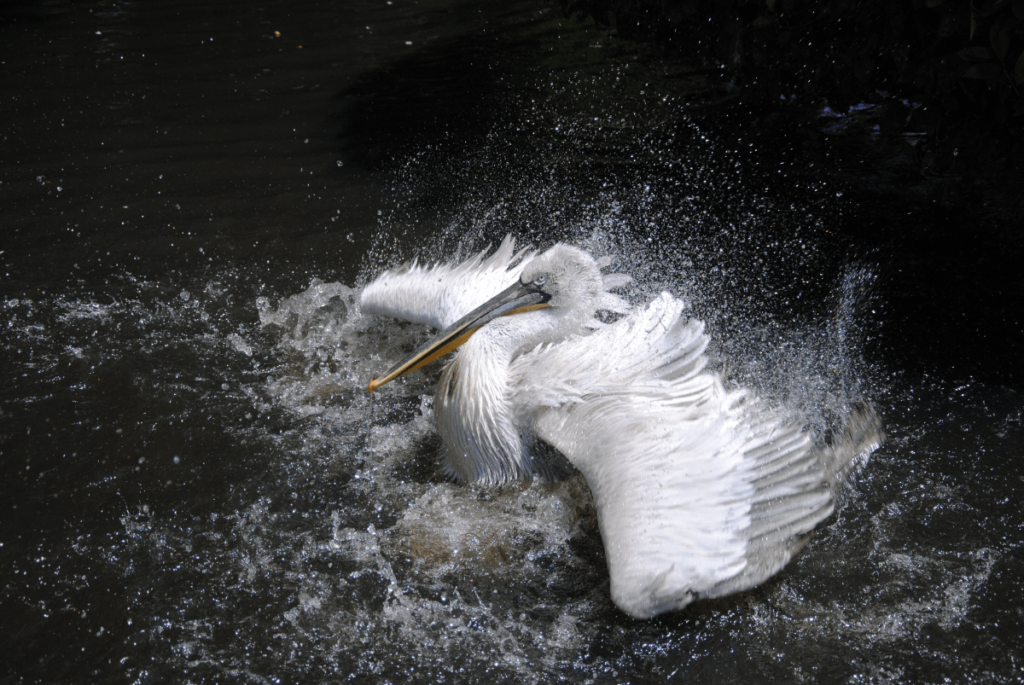
The Great White Pelican is a striking waterbird known for its enormous wingspan and graceful flight. With a wingspan of about 9.5 feet (2.9 meters), this pelican is often seen gliding over lakes and rivers, where it hunts for fish and other aquatic creatures.
- Common Name: Great White Pelican
- Scientific Name: Pelecanus onocrotalus
- Family Name: Pelecanidae
- Type: Waterbird
- Wingspan: 9.5 ft / 2.9 m
- Average Mass: 10 to 15 kg (22 to 33 lb)
- Average Total Length: 140 to 180 cm (4.6 to 5.9 ft)
- Diet: Primarily fish, supplemented by amphibians and small birds
- Habitat: Freshwater lakes, marshes, and coastal areas in Europe, Africa, and Asia
- Conservation Status: Least Concern
Great White Pelicans are social birds that often feed in groups, using cooperative hunting techniques to catch fish. Their large, distinctive bills are perfect for scooping up prey from the water’s surface. While they are currently not at risk, they face challenges from habitat degradation and pollution.
5. Dalmatian Pelican
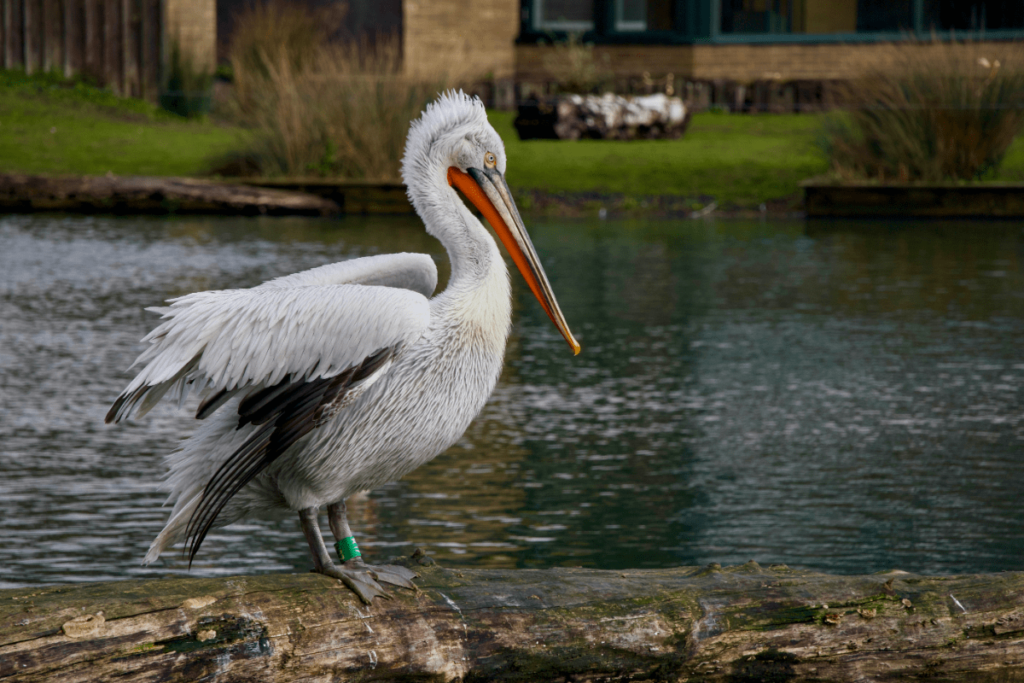
The Dalmatian Pelican is one of the largest pelican species, known for its distinctive appearance and impressive wingspan. With a wingspan that can reach up to 10 feet (3.05 meters), this bird is a magnificent sight as it glides over large bodies of water in search of fish and other aquatic prey.
- Common Name: Dalmatian Pelican
- Scientific Name: Pelecanus crispus
- Family Name: Pelecanidae
- Type: Waterbird
- Wingspan: 10 ft / 3.05 m
- Average Mass: 10 to 15 kg (22 to 33 lb)
- Average Total Length: 140 to 180 cm (4.6 to 5.9 ft)
- Diet: Primarily fish, amphibians, and crustaceans
- Habitat: Lakes, rivers, and coastal areas in Europe and Asia
- Conservation Status: Near Threatened
The Dalmatian Pelican is known for its large, distinctive bill, which is well adapted for catching fish. These birds often hunt in groups, working together to corral fish into shallow waters. Despite their large size and adaptability, they face threats from habitat loss and pollution, making conservation efforts crucial for their survival.
4. Southern Royal Albatross
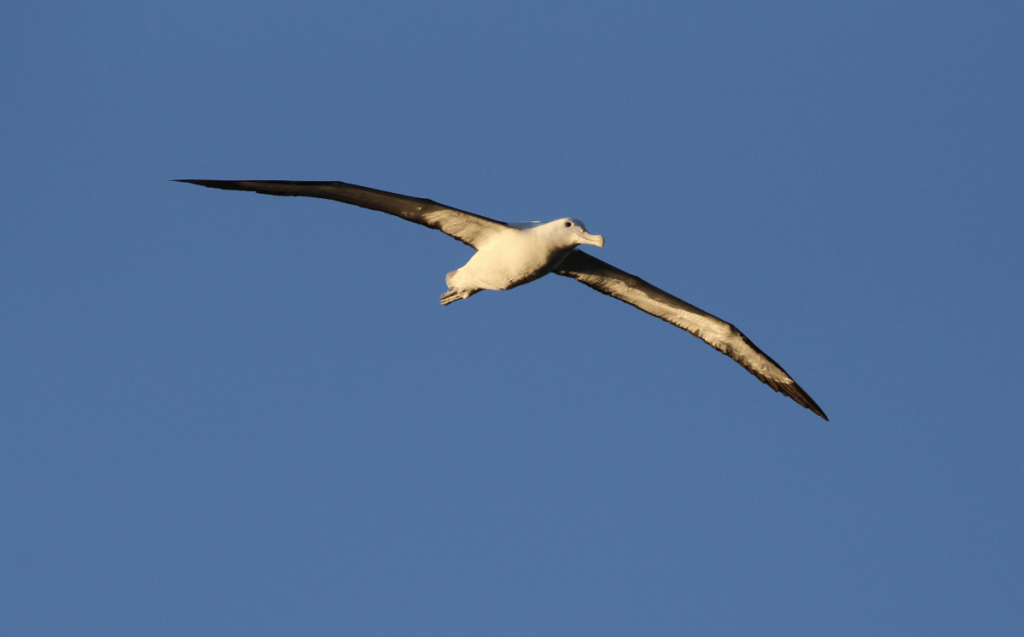
The Southern Royal Albatross is a magnificent seabird, noted for its impressive wingspan and graceful gliding abilities. With a wingspan reaching up to 10 feet (3.05 meters), this bird is a master of the open ocean, effortlessly soaring above the waves.
- Common Name: Southern Royal Albatross
- Scientific Name: Diomedea epomophora
- Family Name: Diomedeidae
- Type: Seabird
- Wingspan: 10 ft / 3.05 m
- Average Mass: 8 to 12 kg (18 to 26 lb)
- Average Total Length: 100 to 130 cm (39 to 51 in)
- Diet: Primarily squid, fish, and krill
- Habitat: Southern Ocean and sub-Antarctic islands
- Conservation Status: Vulnerable
The Southern Royal Albatross is known for its remarkable flying skills, using wind currents to travel vast distances with minimal energy expenditure. However, threats such as climate change, habitat destruction, and fishing practices that endanger their food sources are major concerns for their conservation.
3. Marabou Stork
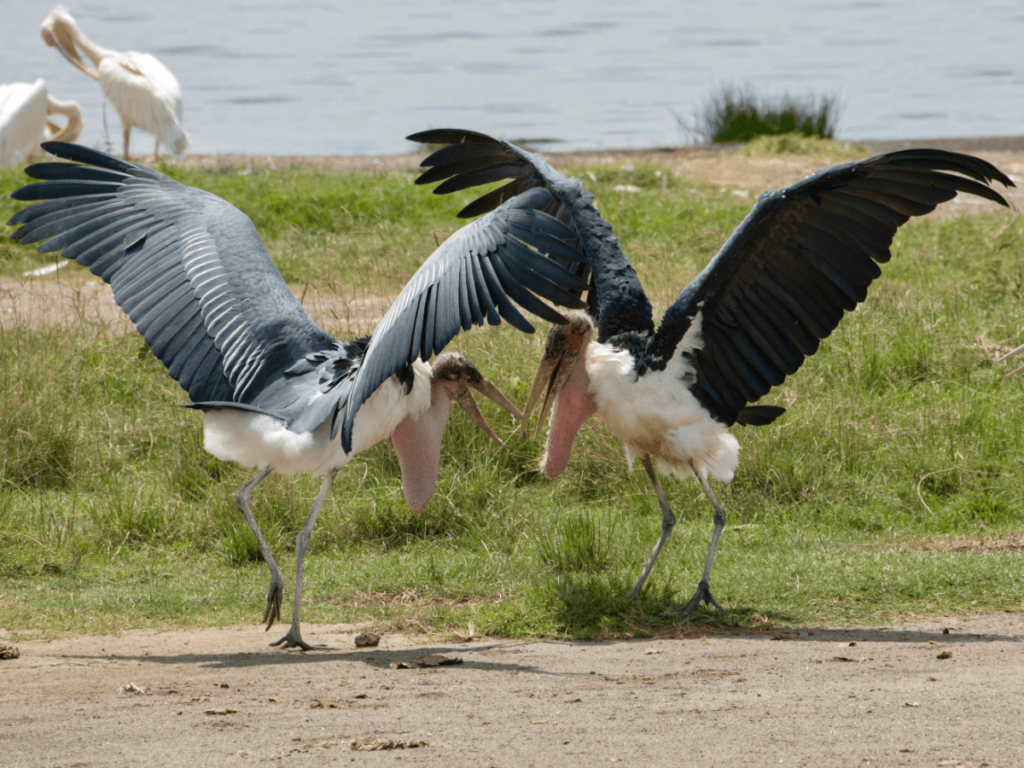
The Marabou Stork is a large wading bird known for its distinctive appearance and impressive wingspan. With a wingspan of about 10.5 feet (3.2 meters), this bird is often seen soaring over wetlands and savannas, where it scavenges for food.
- Common Name: Marabou Stork
- Scientific Name: Leptoptilos crumenifer
- Family Name: Ciconiidae
- Type: Wading Bird
- Wingspan: 10.5 ft / 3.2 m
- Average Mass: 4 to 8 kg (9 to 18 lb)
- Average Total Length: 100 to 150 cm (39 to 59 in)
- Diet: Primarily carrion, but also small mammals and fish
- Habitat: Wetlands, savannas, and near human settlements in Africa and South Asia
- Conservation Status: Least Concern
Marabou Storks are known for their bald heads and large bills, which make them easily recognizable. They are highly adaptable birds that often scavenge near human activity, feeding on waste and carrion. Although they are currently not at risk, their populations can be affected by habitat destruction and pollution.
2. Andean Condor
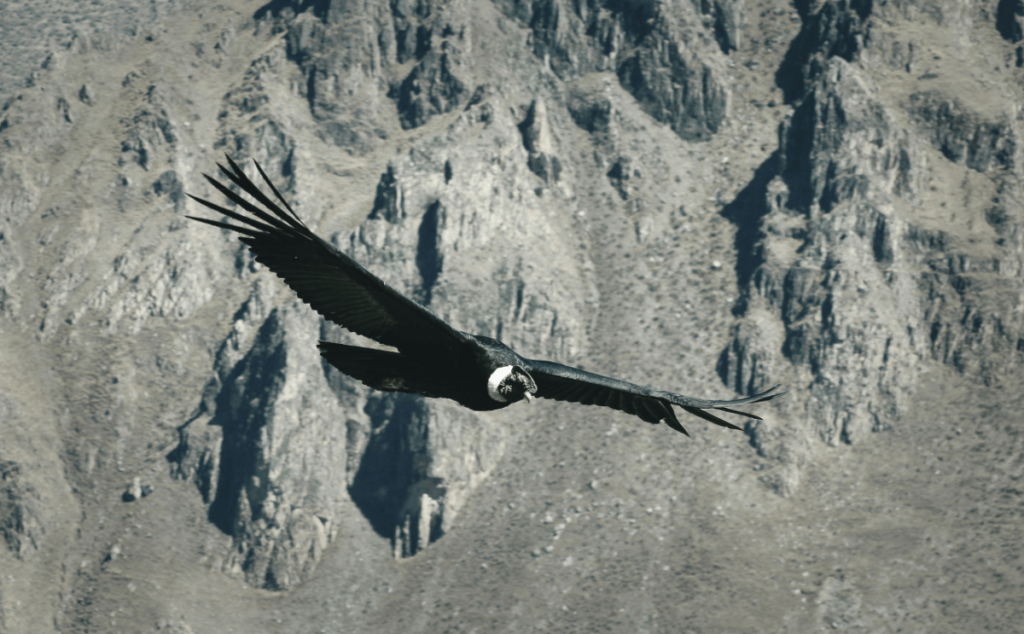
The Andean Condor is one of the largest flying birds in the world, celebrated for its majestic presence and vast wingspan. Reaching up to 10.5 feet (3.2 meters), this iconic bird soars high in the Andes mountains, making it a symbol of South American wildlife.
- Common Name: Andean Condor
- Scientific Name: Vultur gryphus
- Family Name: Cathartidae
- Type: Bird of Prey
- Wingspan: 10.5 ft / 3.2 m
- Average Mass: 11 to 15 kg (24 to 33 lb)
- Average Total Length: 100 to 130 cm (39 to 51 in)
- Diet: Primarily carrion
- Habitat: High mountainous regions and open grasslands in South America
- Conservation Status: Near Threatened
The Andean Condor is a scavenger that plays a crucial role in the ecosystem by helping to dispose of dead animals. Its impressive wingspan and powerful flight enable it to cover large areas in search of food. However, habitat loss and hunting pose threats to its population, necessitating conservation efforts to protect this majestic bird.
1. Wandering Albatross
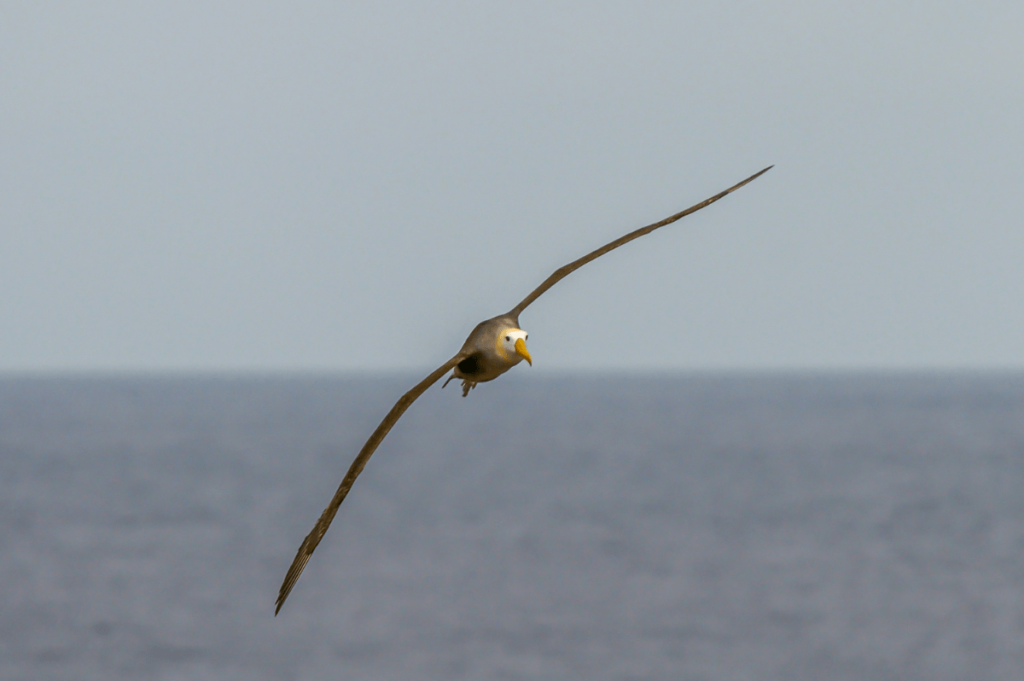
The Wandering Albatross is renowned for its incredible wingspan, making it a true marvel of the avian world. With an impressive wingspan that can reach up to 12 feet (3.6 meters), this bird is not only the largest among the albatross family but also holds the title for the bird with largest wingspan in the world. These magnificent birds are known for their exceptional gliding abilities, enabling them to travel vast distances over the open ocean without expending much energy.
- Common Name: Wandering Albatross
- Scientific Name: Diomedea exulans
- Family Name: Diomedeidae
- Type: Seabird
- Wingspan: 12 ft / 3.6 m
- Average Mass: 6.8 kg (15 lb)
- Average Total Length: 86 cm (2.8 ft)
- Diet: Primarily fish, squid, and krill
- Habitat: Southern Ocean and the North Pacific
- Conservation Status: Least Concern
The Wandering Albatross’s large wingspan allows it to exploit the wind currents above the ocean effectively. By spreading its wings wide, it can glide for hours, covering thousands of miles in a single journey while searching for food. However, the very characteristic that makes it a successful hunter—the ability to soar and glide effortlessly—also comes with its challenges. These birds are vulnerable to environmental changes, including climate change, which impacts their food sources and breeding grounds.
Top 10 Birds with Longest Wingspan:
| Rank | Common Name | Scientific Name | Family Name | Type | Wingspan | Average Mass | Average Total Length | Habitat |
|---|---|---|---|---|---|---|---|---|
| 10 | Grey-headed Albatross | Thalassarche chrysostoma | Diomedeidae | Seabird | 8 ft / 2.45 m | 3.4 to 4.5 kg (7.5 to 9.9 lb) | 81 to 91 cm (32 to 36 in) | Southern Ocean, particularly around sub-Antarctic islands |
| 9 | Bearded Vulture | Gypaetus barbatus | Accipitridae | Vulture | 9 ft / 2.75 m | 5.5 to 7.5 kg (12 to 17 lb) | 90 to 105 cm (35 to 41 in) | Mountainous regions in Europe, Asia, and Africa |
| 8 | Bald Eagle | Haliaeetus leucocephalus | Accipitridae | Bird of Prey | 8.2 ft / 2.5 m | 3.6 to 6.3 kg (7.9 to 14 lb) | 70 to 102 cm (2.3 to 3.4 ft) | Near large lakes, rivers, and coastal regions in North America |
| 7 | Tristan Albatross | Diomedea dabbenena | Diomedeidae | Seabird | 9.2 ft / 2.8 m | 8 to 12 kg (18 to 26 lb) | 105 to 125 cm (41 to 49 in) | Tristan da Cunha and surrounding waters in the South Atlantic Ocean |
| 6 | Great White Pelican | Pelecanus onocrotalus | Pelecanidae | Waterbird | 9.5 ft / 2.9 m | 10 to 15 kg (22 to 33 lb) | 140 to 180 cm (4.6 to 5.9 ft) | Freshwater lakes, marshes, and coastal areas in Europe, Africa, and Asia |
| 5 | Dalmatian Pelican | Pelecanus crispus | Pelecanidae | Waterbird | 10 ft / 3.05 m | 10 to 15 kg (22 to 33 lb) | 140 to 180 cm (4.6 to 5.9 ft) | Lakes, rivers, and coastal areas in Europe and Asia |
| 4 | Southern Royal Albatross | Diomedea epomophora | Diomedeidae | Seabird | 10 ft / 3.05 m | 8 to 12 kg (18 to 26 lb) | 100 to 130 cm (39 to 51 in) | Southern Ocean and sub-Antarctic islands |
| 3 | Marabou Stork | Leptoptilos crumenifer | Ciconiidae | Wading Bird | 10.5 ft / 3.2 m | 4 to 8 kg (9 to 18 lb) | 100 to 150 cm (39 to 59 in) | Wetlands, savannas, and near human settlements in Africa and South Asia |
| 2 | Andean Condor | Vultur gryphus | Cathartidae | Bird of Prey | 10.5 ft / 3.2 m | 11 to 15 kg (24 to 33 lb) | 100 to 130 cm (39 to 51 in) | High mountainous regions and open grasslands in South America |
| 1 | Wandering Albatross | Diomedea exulans | Diomedeidae | Seabird | 12.1 ft / 3.7 m | 8 to 12 kg (18 to 26 lb) | 102 to 135 cm (40 to 53 in) | Southern Ocean and sub-Antarctic islands |
Conclusion
In conclusion, the world of birds offers an awe-inspiring array of species with remarkable adaptations, particularly in their wingspans. From the magnificent Wandering Albatross, with its record-breaking wingspan of 12 feet, to the impressive Andean Condor and the striking Marabou Stork, these birds exemplify the beauty and diversity of avian life. The Southern Royal Albatross further highlights how these adaptations enable birds to soar gracefully over vast distances, showcasing their incredible flying abilities.
However, as we admire these magnificent creatures, it is essential to acknowledge the challenges they face due to environmental changes, habitat loss, and human activities. Many of these birds are threatened, emphasizing the urgent need for conservation efforts to protect their habitats and ensure their survival for future generations.
By raising awareness about these incredible birds and their ecological significance, we can contribute to preserving their populations and the rich biodiversity of our planet. Let us celebrate these aerial wonders and commit to protecting their natural environments, ensuring that they continue to grace our skies for years to come.
